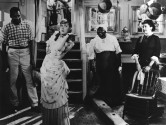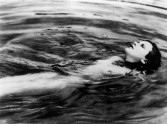
The City Symphony
Screening on Film
During the 1920s many filmmakers explored the idea of the city as the central force in modern life. Referred to as “city symphonies,” these works explored the compelling intersection between nonfiction and avant-grade modes of expression, using real locations to construct poetic visions.
PROGRAM
-
Rain
Directed by Mannus Franken and Joris Ivens.
Netherlands, 1929, 35mm, black & white, silent, 12 min.
A rainy day in Amsterdam provides the inspiration for Joris Ivens’ striking film poem. Although seamless in its presentation of a day in the life of the Dutch people, the film actually took two years to prepare.
Alberto Cavalcanti presents all walks of life as he chronicles a day in Paris from dawn to dusk. While faithful to its real life subjects, the film uses a modernist form which complicates its common classification as nonfiction. Cavalcanti’s film reputedly inspired Dziga Vertov to create his own city symphony, Man with a Movie Camera.
Walther Ruttman’s impressionistic vision of Berlin stands as one of the great “city symphonies” of the silent era. A day-to-night portrait of the city that deploys kinetic editing and a graphic mode of cinematography to capture the dynamism of the modern urban environment, the film set a lasting precedent for the representation of city life in cinema. Although the events appear to take place during a single spring day, Ruttman spent eighteen months assembling footage to produce the final film. Whether classified as a work of nonfiction or the avant-garde, Ruttman’s poetic work remains a classic of cinema.






















